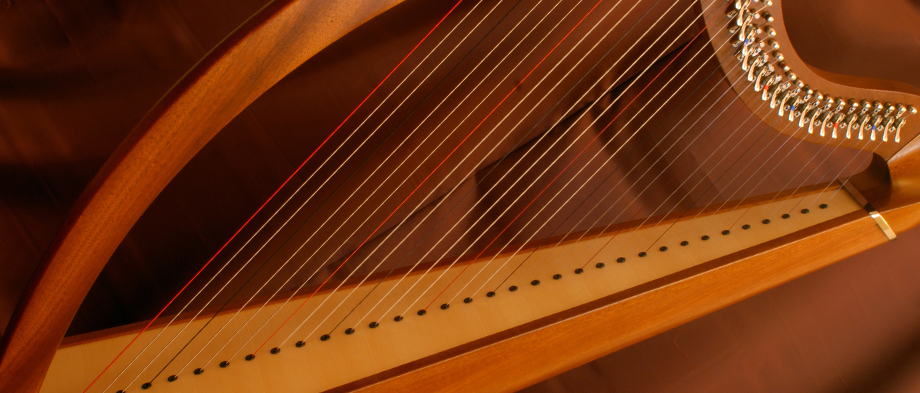
Celtic Harp
Ita
L’arpa è lo strumento simbolo dell’Irlanda e, nonostante oggi stia godendo di una rinnovata popolarità, è all’origine di una evidente contraddizione riguardante la musica irlandese.
Una delle principali attuali tendenze è la sua utilizzazione quale strumento di accompagnamento, alla stregua della chitarra, e non più in qualità di strumento solistico.
L’arpa celtica, o arpa gaelica , è uno strumento a corde tipico del folklore dei paesi europei di area celtica. L’arpa triangolare celtica proviene dalla Scozia, dove compare durante l’ottavo secolo; si è successivamente diffusa in Irlanda dal dodicesimo secolo e poi nel Galles e in Bretagna.
Gli antenati dell’arpa celtica devono essere ricercati tra le arpe dei Babilonesi, degli Assiri e degli Egizi. La più antica arpa celtica è databile intorno al XIV secolo.
L’arpa celtica si differenzia dall’arpa classica usata nelle orchestre sinfoniche per vari motivi, primo dei quali le dimensioni, difatti l’arpa celtica è più piccola rispetto all’arpa classica; un’altra differenza sostanziale è l’assenza di pedale sostituite dalle chiavi (chiamate Lever) con cui si ottengono i semitoni.
Nella mitologia Celtica, non solo i bardi ma anche i maghi e i Re avevano una propria arpa che diventava simbolo di potenza.
Eng
The Celtic Harp is known by a number of names, including the Irish, the Folk, and the Lever. It is indigenous to the following countries, where it has a name in each dialect (noted in parenthesis): Brittany (‘telenn’), Scotland (‘clarsach’), Wales (‘telyn’) and Ireland (‘clairsech’).
This large, triangular-shaped, wire-strung instrument is notoriously difficult to master, and as such is played by instrumentalists of the very highest order. It is synonymous with the Celtic ruling elite, as in those days it was regarded as an instrument of high status. And, of course, it is the national and very evocative emblem of Ireland, a symbol that instantly brings to mind the Emerald Isle and the wonderful Irish traditional music that is so associated with it.
The ancestry of the harp is much discussed among experts, and no one definitive consensus has yet been reached. The very first Gaelic instrument was called a ‘cruit’. While the design is not wholly clear, it is thought by some to have been the precursor to the Irish ‘clairseach’ (in Scottish Gaelic ‘clarsach’) that described the triangular-shaped instrument that eventually supplanted the cruit. During medieval times, this wire-strung instrument remained in high demand all over the Gaelic world and was intrinsic to courtly life. Yet by the middle 1700s the fiddle had largely supplanted the harp, which almost sounded the death knell for the instrument. However, by the early 1800s it was thankfully undergoing something of a revival in Ireland.
The Celtic harp is intimately associated with the Celtic culture and irish traditional music from medieval times right up to the present day. Its history can be traced back for literally thousands of years, and it has played a pivotal role in the culture, religion, politics and society of the Celtic people. It continues to do so even now.
Credits: wikipedia.it – irlandando.it – wikipedia.com – theirishplace.com



